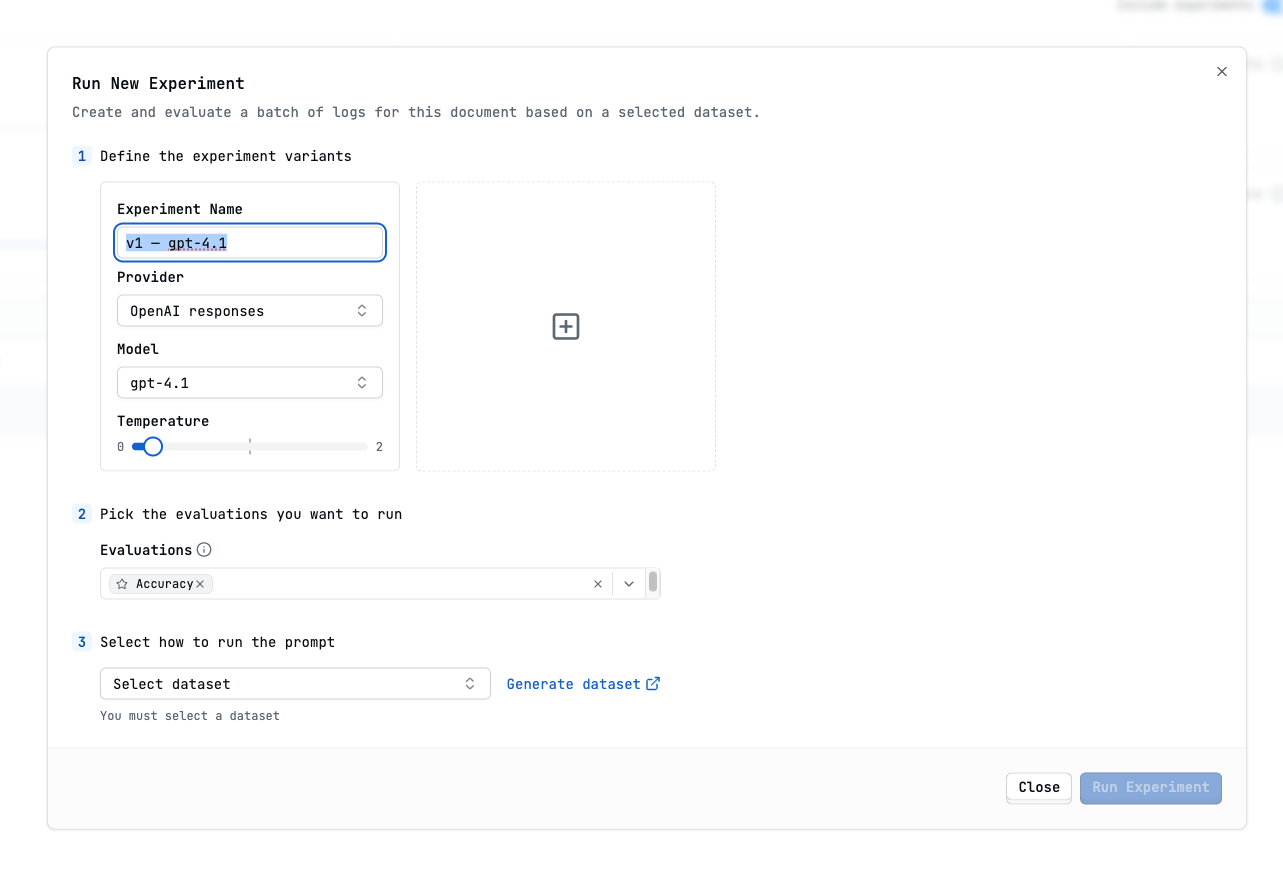Skip to main contentWhat are Experiments?
Experiments in Latitude are a feature that let you systematically test, evaluate, and compare different prompt configurations, model versions, and parameters (like temperature) across a dataset. This enables you to find out which prompts and models work best for your use case, using real, measurable results.
How Experiments Work
-
Run Location:
You can run experiments directly from the Prompt Playground
 or from a Latitude Evaluation
or from a Latitude Evaluation

-
Experiments Tab:
Each prompt in Latitude has an Experiments tab, where you can compare results from different experiments side-by-side.
Experiment Components
- Prompt Variants:
Test different prompt wordings, instructions, or templates.
- Model Versions:
Compare outputs from different models (e.g.,
gpt-4.1, gpt-4.1-mini).
- Parameters:
Adjust settings like temperature to influence model behavior.
- Evaluations:
Attach evaluation metrics (e.g., accuracy, sentiment analysis) to automatically assess experiment outputs.
Running an Experiment
- Define Variants:
Choose your prompt(s), model, and settings.
- Pick Evaluations:
Select which evaluation metrics to run (optional).
- Select Dataset:
Pick or generate a dataset to use for testing.
 Click Run Experiment to execute, and Latitude will process each combination and display the results.
Click Run Experiment to execute, and Latitude will process each combination and display the results.
Comparing Experiments
- Use the Experiments tab to select and compare multiple experiment runs.
- Review metrics like accuracy, cost, duration, and token usage.
- See detailed results, including logs and evaluation scores, for each experiment.

Benefits
- Objective Comparison:
Quickly see which prompts and models perform best on your tasks.
- Visual Analysis:
Side-by-side results make differences easy to spot.
- Cost Tracking:
Monitor token and cost usage for each variant.



